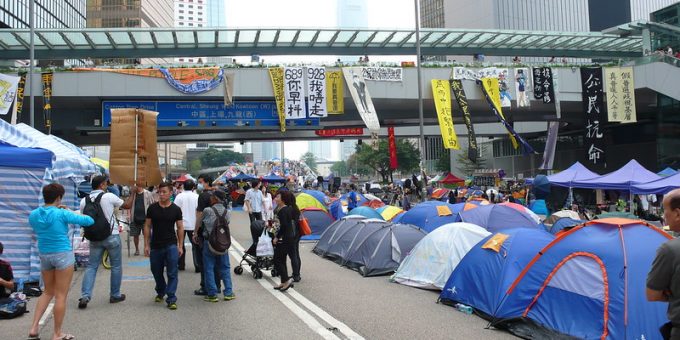
The Occupy Central Movement's 2014 encampment in Hong Kong. Photo by Roger Newbrook, Flickr CC, https://flic.kr/p/pFM3Vv
In Brief: Close to the Issue
Why would you support a protest? Ranging from socially disruptive to catalysts for change, our perceptions of protests and social movements are often shaped by the extent to which our own political affiliations align with the goals of the movement. For example, during the wave of Black Lives Matter protests during the summer of 2020, Pew Research reported that public support was significantly higher among African Americans and Democrats than it was among White Americans and Republicans. However, new research published in the British Journal of Sociology suggests another factor at play in shaping our perceptions of mobilizations: spatial proximity, or how close we live to where protests are taking place.
In the study, which looks at public support of the 2014 Occupy Central Movement in Hong Kong, Duoduo Xu and Jaio Guo use two rounds of survey data to gauge the influence of spatial proximity on citizens’ support for the protests and on their political ideology. They find, first, that those who lived closest to the protest expressed higher levels of support for the movement, despite experiencing greater levels of disruption to their daily lives. Second, residents living closest to the protest also showed a liberalizing effect over time; as measured from slightly before the protests up to a year afterward, their self-reported political ideology shifted to the left.
For social movements, this is good news: raising a ruckus, it seems, raises awareness and support in more ways than one. By making their movements more visible—and proximal—to the public, protesters may gain the voices and votes of their fellow citizens.

Comments